|
I've been thinking about this plant a lot, lately. It's a Golden Currant, a shrub native to the Pacific Northwest. When my son planted it, it was a delicate stem, about as tall as my pinkie. It was crowned with two, tiny, wrinkled, leaves. I didn't hold much hope for its survival. A few seasons later, it's a couple feet tall, boasts multiple branches, and it's decked with lush green leaves and dainty yellow blossoms. I'm impressed and delighted by its growth. It's flourishing and soon it will bloom. I think about this plant because of how beautifully it illustrates the development of a living organism, well-established in an appropriate climate, rooting into the soil where it is planted, sustaining each season's shifting resources, to then stretch, leaf, and ultimately bear fruit. It's the metaphor I return to when reflecting on our family. We are a well-established plant that began as a tenuous little sprout. The three of us have been in this house for six years. In recent months, I’ve recognized the depth and breadth of our growth and the benefits we produce together. The first place I see it is in N. I know that a lot of the changes I see in N are due to his own maturing with age. But that growth is supported by the place that we have reached as a family and the parenting that J and I practice. N is open with both of us about his feelings, concerns, goals, and successes. I used to worry about N’s relationship with J. I felt like I was bridging and mediating the two of them and all of their communication ran through me. Now, I overhear conversations and collaborations between them that have nothing to do with me. They have trust and rapport all their own. I also see changes in how J and I relate. A little over a year ago we thought our marriage was done, but N didn’t want us to separate and break up the household. So we each dug a little deeper into ourselves, as individuals, and our communication and connection as a couple. We have new habits that keep us talking about our inner, personal stuff, along with the day-to-day pragmatics of running a house and raising a young man. My favorites are the groggy early mornings together over coffee and the evening chats before bed. It’s as if that liminal state, between awake and asleep, we can be more honest, authentic, and sometimes silly, than during the more alert hours of the day. I’m savoring this new, established phase of our growth as a family. I love that N will choose that we sit at the kitchen table for dinner together, rather than hovering over the coffee table in front of the tv. I relish the days when we all play hooky from school and jobs, and we’re all at home working on projects or hanging out. I look forward to our vacations, exploring new places or revisiting familiar favorites, and photographing the requisite family selfies along the way. I’m grateful. I’m pausing to acknowledge and celebrate the attention, intention, and deliberate work that brought us from being three people occupying a house to an established family, engaged and responsive to each other, co-creating and sharing life together.
0 Comments
Now is a sweet spot in our home and family life.
It's been just over a year since my last "now" posting. This is now:
Death, shedding an old skin to embody something new, churns stuff up. Death, in the form of change, releases into my consciousness old memories, emotions, and “stinkin’ thinkin’” from the past. It’s uncomfortable and disruptive. When I close my eyes to rest, dimly lit memories play in my mind. I hear the messages loud and clear, “You are immature and insecure. You are foolish. No good will come of you. No good will you experience. No good is your value.” I feel the memories in my body and emotions as if they are current and real. They aren’t and they are. The messages come from pained parts of me requesting my attention in the only way they can. As I shed old patterns or habits to practice something new and good for my life, the past begs to remain part of who I am. “Tend us,” the memories say. “Care for us as we have not been cared for before.” “Bring us with you.” Death would be more pleasant if I could leave the past behind me, delete it, taking only the lessons, spelled out in all caps and bolded, like crisp text. But my memories are more than tidy lessons. My past is stitched into my nervous system informing how I feel, react, and respond to current stimulus. Loosed from the memories, these sensations make no sense, they are meaningless pain, which I don’t know how to alleviate. Change that heals, change that lasts, requires some connection to the past. Death is a body of work that includes loving attention to the past. For me, that means deliberate and intentional practices to see and comfort old parts of myself. I imagine there are a variety of ways to do this. I’m using a combination of morning pages to get my insides out where I can see them and resting cozily with a hot water bottle to comfort my body at night. Has anything been shook loose while you were making significant changes in your life? How do you attend to those pieces?
I'm working out my faith as one who hears the MADWOMAN's call. This is what I believe, today. Apostasy is a theological term for the renunciation of one’s religion. I didn’t grow up knowing this word or thinking about it. But I knew it was wrong or bad or crazy to reject the gracious gift of salvation from sin, eternal life, and the sacrifice of Jesus on The Cross. My Christian education was very clear about all of that. I didn’t want to be wrong or bad or crazy. I didn’t want to worry about Hell. Or reject a great and precious gift. Still, it was making me crazy claiming a faith I didn’t wholly possess. As a teen, I decided that it was normal doubt, a typical phase for an adolescent raised in the church, and took classes to bring me back to the core of the religion. When my father died, and I slid loose from clinging to his religion, those core beliefs couldn’t catch me. I landed hard. I surveyed what remained of my faith. Then, I started a slow, iterative, circling and cycling path to my own core beliefs. That included identifying and rejecting beliefs I’d been raised with and found vacant. For me, slow has meant years-long and riddled with more pauses than clarity. The process has been graced with good friends, good books, and a million pages of journaling. My apostasy began with simple, pragmatic, choices made from my gut. There were hymns I couldn’t sing anymore because of battle imagery or other language that neither articulated nor resonated with my understanding of good, the ineffable, and even the example of Jesus’ life. Soon, I took issue with lines of a creed or the tone of a prayer. There were entire sermons that left me cringing and crabby. Until I just didn’t go to church, anymore. There was nothing there for me but irritation and angst. I had to delete so much of the service that I was left with gaping holes where others gleaned instruction or comfort or community. I returned to church, briefly, in my mid-thirties. I was a new mother and aching for a community to share with and to receive support. The same script played out for me there. Vacancies developed within the services, as I closed my mouth from saying things I didn’t, and still don’t, believe. I wished I could play along to be part of the community there. But it chafed so painfully and I couldn’t settle in. I widened my search for “open and affirming” congregations and congregations with evidence of doing good work in the neighborhood or the city. I did find them. But the words, creeds, and sermons were in those places, too. After decades of resisting what I knew, intuitively, since childhood I turned inward to meet that message. I stopped fighting with the external definitions of God and Gospel. I listened closely to the good news I understood within me. I felt free to lay down each belief and practice that I denied. It released me from a binding tension, which had held me in one place in my spirituality. I entered into faith anew. Building my set of beliefs and actions. Finding my community one connection at a time. I finally accepted my apostasy, with a snicker and a smile, when I was able to also identify and claim my heresy. What is your apostasy? Play fast and loose with the idea. Don’t be limited to a particular religious instruction. Maybe it’s cultural canon that you are ready to lay down because it no longer rings true.
My Christian faith started evolving 25 years ago, but the kernel or promise of change was embedded in my heart since childhood. The catalyst for my transformation was the fire of grief, which cracked me open and left me exposed. Community, in the form of women’s friendship and wisdom, tended me, planted me deeply in cool soil, and gave me room to grow. My father died when I was 18. I was in college at an Evangelical Christian school. In the following year, I attempted suicide. My family of origin slid into a state of alienation from each other. I was angry and bereft, rude and out of control. I struggled against everything and everyone. Something essential in me prevailed and was witnessed. Other women saw it. I received compassion and insight from female professors at the college. They brought me to church, a woman-lead Episcopalian congregation. They taught me about feminism, new-to-me theologies, women’s perspectives and experiences conveyed by women authors in narratives and poetry. I learned about the entanglement of Christian religion with colonialism. I reached out and met other female students wrestling with the same ideas and stretching into their own awakenings. I prayed and played with God alongside the guidance of an eclectic and faithful spiritual director. Among the many books I read, were Jane Eyre and Wide Sargasso Sea. Those two books depict the life of Bertha, the first wife of Jane Eyre’s Mr. Rochester. He locked Bertha away as a madwoman, but before she met him she was free, roaming a lush paradise, beholden to no man and no other way of being. Ultimately, Jane Eyre tells us, Bertha burns down the house that is her prison, and her life ends in the flames. This character captured my imagination as an icon for the divine. She was a depiction of God before and after men’s language and power structures locked the divine into dogma and authority. I started to perceive and honor the divine as the “Madwoman in the Attic.” I composed a story about hearing Her in the house made by men and sneaking up to her door. After college, I struggled in the ways that many recent graduates do. Adjusting to the independence and responsibilities of an adult is challenging. The community that I’d known was gone, each woman to her own place and work and relationships. The books remained but a group that lived in response to those words, perspectives, and visions did not exist. There was no “there” there. I yielded to daily life. I found connection and fun with new friends. I misplaced the vitality and piercing perception of my early twenties. I harbored the icon of the Madwoman in my heart and lodged myself on the threshold of her room. A few weeks before my thirtieth birthday I moved across the country to Seattle for graduate school. It was my fresh start, far from my family, my personal history, the church I grew up in, the politics I did not subscribe to. The Madwoman resurfaced in my graduate studies and occupied a central role in my thinking and writing. As I drafted my thesis I heard Her call. She did not reveal Herself to me in the upper room of the house, which I had hoped and expected. Rather, She bid me retrace my steps and meet Her in each person I met as I traveled back down through the house. I had received a call. I had conviction and vocation. There was vitality and vision, again! Within a month of receiving approval of my thesis, I married. Within a year of marrying, I gave birth to a son. Not long after that, I recognized that the marriage was over, but it was years before we separated and the divorce was finalized. Those were lean years of providing the single source of income for our family. Those were committed years of tending my mental health with therapy and medication. Those were learning years of finding spiritual community in a group of pagan women. I considered it a tentative descent from the Madwoman’s attic. I am 45 years old. I’ve returned home to Seattle from Evolving Faith ‘19 and the Madwoman’s call is renewed boldly within me. Perhaps she is more precise, now, or perhaps my ears have cleared to hear. She says, “Perceive me in everyone you meet. Everywhere. Do not be bound by walls or ways or words. Burn down the house.” I don’t believe that God is crazy. Nor do I believe that God is locked in conventional theology, dominant culture, or approved religious practices. Burning down the house does not threaten God, just like composing other narratives or engaging new-to-me theologies or participating in previously unfamiliar communities doesn’t threaten God. Burning down the house might set me free to meet God, newly; to honor God, newly; to meet and honor you. There’s still no “there” there, for me. I don’t have a local community that I can simply join for resonance and support, teaching and service. I miss that. I understand, now, the best parts of a house of worship. Even so, I proceed. I am making it up as I go, one step at a time, down from Her attic and into the company of Her people, who are everywhere.
In a joyful ceremony, with friends and family, J and I were married.  We gave special attention to including young N in the ceremony. J made a commitment to N to love and support him as step-father and friend, with care not to replace L. We made promises as a family, in addition to our vows as a couple. N also received a simple silver band as a symbol of the family the three of us make together. Then the party! A picnic reception with plenty of food and cake for all.
In November 2016, my bestie G was diagnosed with a rare blood cancer. We were relieved, in a way, to have a diagnosis for the disturbing symptoms that had been disrupting her mind, relationships, and daily life for months. But... cancer. In an effort to cheer myself, and cast some hope into the future, I purchased some decorative papers to make a journal for her. But the days were so full of worry, fatigue, and challenge after challenge... my energy and inspiration pulled away. The book didn't get made. Two years later, G is cancer-free! She is restored to her full and healthy self. Her family, work, and other relationships, all share in the gifts of her renewal. We are all relieved. We are reconnected. The tenuous thread of life, its preciousness, G's preciousness, made obvious by disease, remains close in our hearts and minds, even as we resume the usual and mundane of our day-to-day. Finally, I am making her book. A token of love and celebration. For her birthday.
I've enjoyed coloring since I was a child. As an adult, it's taken on a different feel and purpose. When I scroll through my old blog, there are intermittent posts of completed coloring pages, filled in at night at the kitchen table, waiting for Baby N to wake up for a feeding or some comfort, until I could finally go to bed. Now, N is a tween who needs different things from me, and I find myself again at the kitchen table coloring. I color to soothe my nerves and clear my head after a day at the office and the commuter traffic. I color because I enjoy the final product. But there's something else easing its way into my little hobby. I color to restore some of my own vibrancy. I'm re-membering my creativity. Granted, filling in a pre-printed page with markers isn't a unique expression of self or anything. But it does offer some foundational elements for developing creativity. I mean both concrete things like choosing colors, establishing patterns, practicing technique with a tool, and intangibles like getting into the “zone,” perceiving something familiar from a different perspective, and engaging imagination and ideation parts of the brain. I’ve missed these parts of myself during these seasons of personal drought. Coloring again feels to me like planting and tending my creativity. Coaxing it out of dormancy. Bringing it up into my life. June Moon Visionary Art free online coloring book Dover Publications offers a diverse array of coloring books
This is what 40-ish years of friendship looks like! But what do I see? In my vanity, I see me. I see pudgy fingers, too full face-chin-neck, an oversize sweatshirt stretched over the too round belly. I see fluffy white old lady hair. This is not the me I want to see. This me doesn't look like... me. Little N picks on me mercilessly about my current weight and size. He calls me "fatty" and criticizes my too big butt. His father, L, didn't talk to me exactly that way, but he, too, made it clear to me that I didn't look the way that he wanted me to. According to him, and to Little N, I used to be beautiful. I must complete an ambitious series of changes in a short amount of time in order to be beautiful... and worthy, and not teased or criticized, and good enough, again. Usually I can resist the harsh criticism of my appearance. I can say back that I'm working on my health and that human bodies change with age. I can tell myself that the ideal they are comparing me to is a societal norm and unrealistic. But then I see a photo of myself and I'm startled and sad to see what I've become. I don't like how I look. I don't need to look young. Right? I need to look like me. So what does "me" look like at 40+? What do I want my physical appearance to convey to my partner, my friends, my critics, and everyone else about myself? I want to exude qualities like: capable, competent, strong, smart, creative, present, attentive, real, genuine. Translating these things into cultural or societal parlance is tricky. Because so often they are only seen as young and thin. I'm not getting younger. I may get thinner but I doubt I'll ever be thin again. So how and where do I, as me, show up? There's another piece to this besides how I look. I'm 43 and a half. My father was 44 when he died. So I've set myself a goal of practicing good health habits in such as way that they're my baseline lifestyle by 44. Roughly six months to adopt all the good information I've learned from the naturopath and therapist and make it mine. Make it me. Six months to transform my body inside and out. It took years for my body to take on its current appearance. Years of struggling with an unsupportive spouse. Working dead end jobs. Wrestling with my mental health. Comforting myself with food. Flailing in the absence of the skills and information necessary to make my body healthy. So I don't expect six months to return me to a lithe 120-ish pound size four with a lustrous bob and stylish clothes. I do expect to improve my bloodwork for sugars and cholesterol. Shed a few pounds. Drop a size (or two...). Decrease my windedness. Increase my stamina. Live a more active lifestyle. And generally feel more like me. My hope is that when I feel more like me, then I'll look more like me. A makeover from the inside out. Where the inside is more important and urgent, and the outside is granted patience and grace. From me, to me.
|
About Jenni God is the madwoman in the attic.
I'm camped out on the threshold with my journal, camera, & plenty of snacks. God is the madwoman in the attic.
I'm camped out on the threshold with my journal, camera, & plenty of snacks.
Categories
All
Out of the Attic
This blog started in 2006
on Blogger as Out of the Attic. I began posting here in April 2014. Please visit the original site for the rest of the story on topics like: |



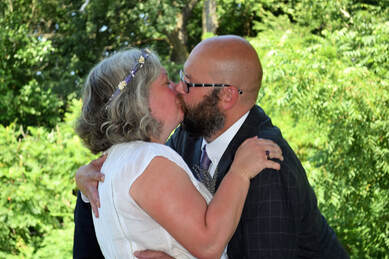



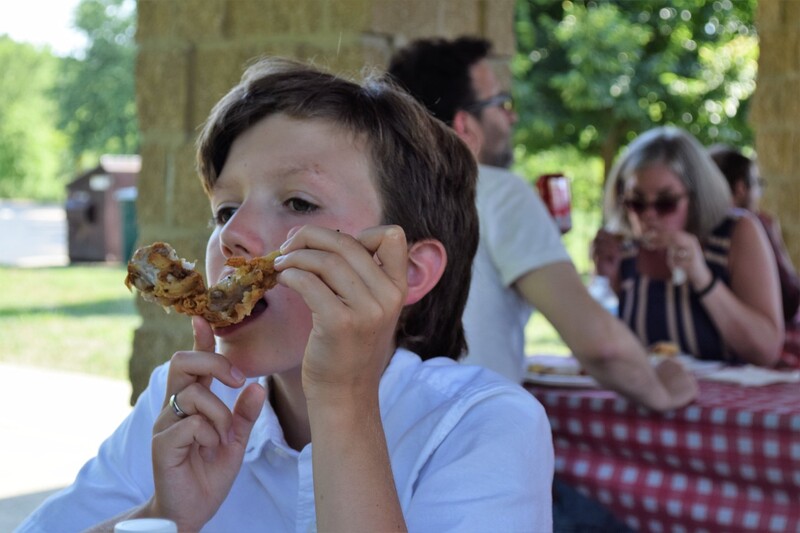






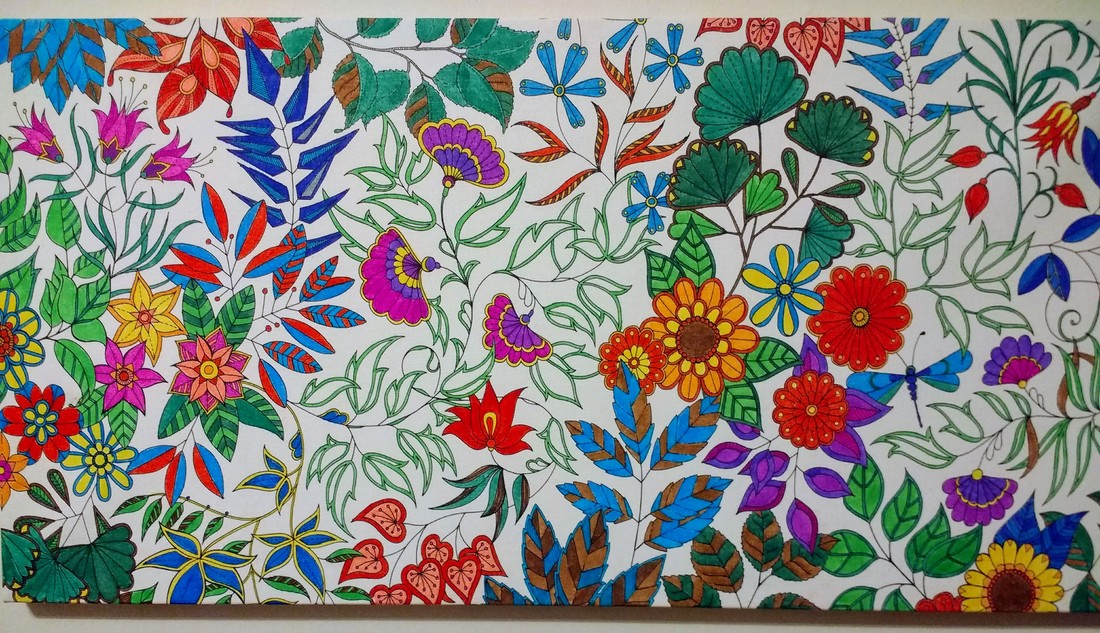
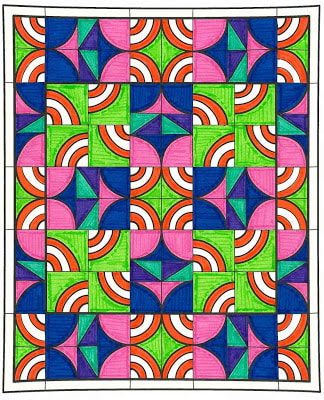





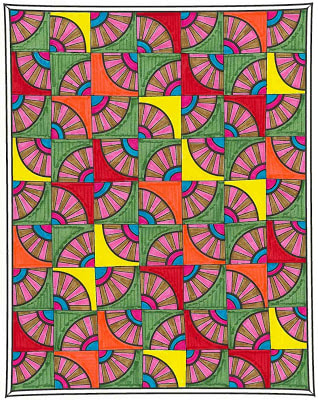


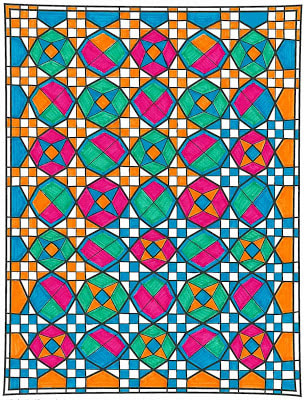


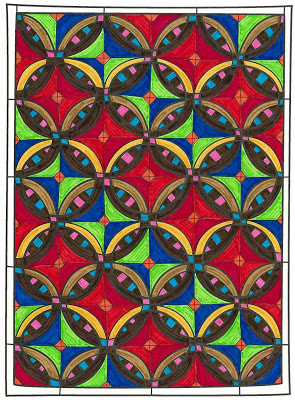



 RSS Feed
RSS Feed




